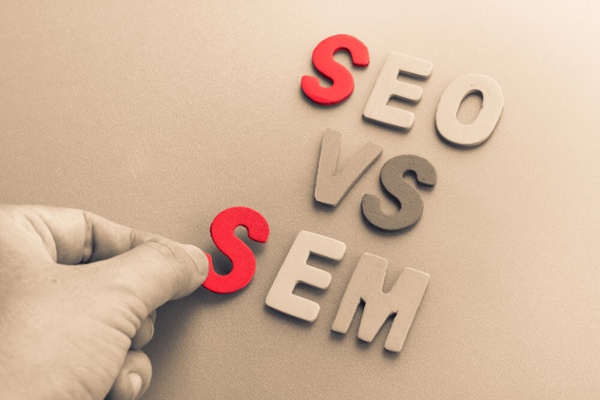
I spend a great deal of time talking with clients and prospects about strategy in B2B marketing and sales. Some topics come up repeatedly, especially how to attract more web traffic using Search Engine Optimization (SEO) and Search Engine Marketing (SEM). There seems to be much misunderstanding and confusion about their merits and exactly how they work. Let’s take a closer look.
Sorting out SEO and SEM
First, let’s put some framework around SEO and SEM. They are often incorrectly used interchangeably or conflated. This blog from SEMRush breaks them down in detail, and defines them thusly:
- SEO is “the art and science of persuading search engines such as Google, Bing, and Yahoo, to recommend your content to their users as the best solution to their problem.”
- SEM is “a strategy using paid tactics to gain visibility on search engines, also known as paid search or pay-per-click (PPC).”
At Acadia, we like to differentiate the two by stating that SEO is the art of owning your audience while SEM is a tactic for renting them. By OWNING your audience, we mean that your website and content (blogs, ebooks, videos, etc.) answer the need or question being entered into search engine query boxes. For example, suppose your company would like to be found online by people searching for AS9100 certified machine shops. You want your website to be included in the list on the search engine results page (SERP), and you don’t want to pay money to be included in the results (as you would with a PPC strategy).
If you have an ongoing SEO program for content development, your website continues to build domain and search authority for organic searches. In other words, topics and phrases in your content are relevant to what users are “Googling” and appear in search results.
Unlike SEM, where your set budget may run out at the end of the month, or you only receive as much traffic as you can afford, SEO is a constant that isn’t tied to the number of clicks you pay for. A well-run SEO program will continue to generate valuable clicks because your website and content answer the specific questions being asked. Technically, there is no limit to your findability with SEO.
What are the real costs associated with Search Engine Optimization (SEO)?
As with so many things in sales, the answer to this question isn’t straight forward. I am not saying that SEO doesn’t come without a price, nor am I saying SEM is bad because you’re paying for clicks. They are both viable strategies, but in different ways. If you are looking for immediate results, SEM will provide that if run well. But you will be paying for every click you receive and are tied to your budget.
SEO, on the other hand, is a much longer-term investment that will continue to pay dividends over time because it’s built right into your site. The key is to work with a company that understands how buyers buy in YOUR industry. This way, content can be tailored to your audience and most important prospects, with questions they ask, challenges they face, and factors that influence their decisions.
Your investment in SEO is tied to both time and monetary resources, including:
- A team of content creators (e.g. writers, designers, digital specialists) with an ongoing commitment to creating and posting written and visual content regularly
- A knowledgeable SEO analyst who can monitor the trends and track the impact of the changes and content
- A company or person that understands how to build a website optimized for search engine algorithms (remember, a poorly-built site will incur penalties from the algorithm and can hurt your search results ranking)
An investment that pays off
As you can see, it takes a team, time, and careful thought to do SEO, but when done well the return is well worth the effort because you own the audience – you are not renting it. The graph below shows actual data from one of our clients. The green line is SEO-driven (i.e. organic searches) and the red line is SEM-driven (i.e. PPC).
 Both show an increase in hits, but the SEO growth is a direct result of well-planned content building credibility over time. What’s more, the “monthly budget” for SEO doesn’t change. In contrast, the paid search line is tied directly to the client’s budget – more clicks are more expensive.
Both show an increase in hits, but the SEO growth is a direct result of well-planned content building credibility over time. What’s more, the “monthly budget” for SEO doesn’t change. In contrast, the paid search line is tied directly to the client’s budget – more clicks are more expensive.
Does this mean you have to choose one over the other? No, but your ultimate goal should be to have a higher percentage of website traffic coming from SEO than SEM. Finding the correct balance between SEO and SEM is critical, and it’s just one of the things Acadia can help you with – please contact us to learn more!
